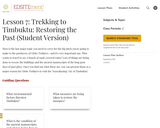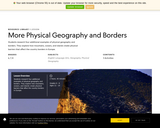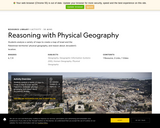
This parent guide supports parents in helping their child at home with the 7th grade Social Studies content.
- Subject:
- Social Studies
- Material Type:
- Reference Material
- Vocabulary
- Author:
- Kelly Rawlston
- Letoria Lewis
- Date Added:
- 10/12/2022

This parent guide supports parents in helping their child at home with the 7th grade Social Studies content.

This resource accompanies our Rethink 7th Grade Social Studies course. It includes ideas for use, ways to support exceptional children, ways to extend learning, digital resources and tools, tips for supporting English Language Learners and students with visual and hearing impairments. There are also ideas for offline learning.

A website resource that provides facts and data that documents the forced removal of enslaved persons from Africa and their arrival to North Carolina.

This video explores the pros and cons of desalination. A set of discussion questions and post-viewing activities are provided.

Students consider how the availability of water as a resource has impacted development
in the United States or elsewhere, drawing on geography and history.

In this two-day lesson, students will be introduced to several issues related to the social, economic, and environmental impacts of our current food system, including food waste, food deserts, agricultural land use, and the environmental impacts of diet choices.

In this lesson, students will work collboratively to tackle a water conservation issue at home or in their school.

This lesson plan specifically addresses the implications of a natural disaster and its effects on water quality and a community's health. Students will learn methods used during an emergency response to test and treat water that has been contaminated by pathogenic microorganisms. Water treatment options introduced can vary depending on the location and type of emergency involved, but have the same goal to reduce human illness and death. After completing this lesson, students will have an improved understanding of which organizations are involved in emergency response and why safe drinking water is a substantial heath concern after a natural disaster.

This video explores key water issues, the water cycle, and some of the technology and techniques used to conserve water. A set of discussion questions and post-viewing activities are provided.

In this lesson, students will read articles related to water shortages around the world and answer questions about them. The class will discuss the articles.

Students will be introduced to the Industrial Revolution's problem of child labor. Students will be able to describe advances in machinery during the Industrial Revolution. Students will identify reasons for the use of child laborers during the Industrial Revolution and describe how child laborers lived during the Industrial Revolution. Some of the YouTube links are dead, but the images are included in the pdf.

The Japanese Weather Patterns unit provides students opportunities to interpret and analyze trends in weather patterns over many years in both Japan and the United States. Students will compare the annual rainfall and average temperatures at different times of the year in both places. Students will also identify ways the Japanese culture and weather patterns are reflected in the artwork of Mount Fuji and will construct haikus reflective of Japanese culture and weather patterns as depicted in art.

In this lesson, students use maps to learn about the geographicac features and climate of Mali and consider what this can tell us about demographics and economics of the country.

In this lesson, students learn about current issues in Timbuktu including environmental threats and restoration efforts.

Students research four additional examples of physical geography and borders. They explore how mountains, oceans, and islands create physical barriers that affect the country borders in Europe.

This teacher's packet is designed to provide Middle and High School Teachers ideas and tools to explore the history of Victor Green's travel guide for Black travelers during the Jim Crow era in North Carolina. It provides lessons and activities to take a closer look at this time period in our state's history and learn about the NC businesses featured in Victor Green's books.

This unit begins with a set of lessons designed to explain the evolution of armed conflict. As warfare adapted, humans left behind natural toxins and poisons and began creating synthetic chemical weapons. The culminating products include an environmental impact statement regarding one specific chemical agent and a global project recommendation designed to mitigate the effects of that agent.

Students analyze a variety of maps to create a map of Israel and the Palestinian territories' physical geography, and reason about Jerusalem's location.

This course was created by the Rethink Education Content Development Team. This course is aligned to the NC Standards for 7th Grade Social Studies.

This course was created by the Rethink Education Content Development Team. This course is aligned to the NC Standards for 7th Grade Social Studies.